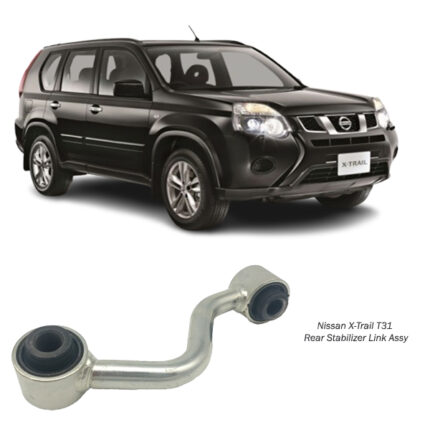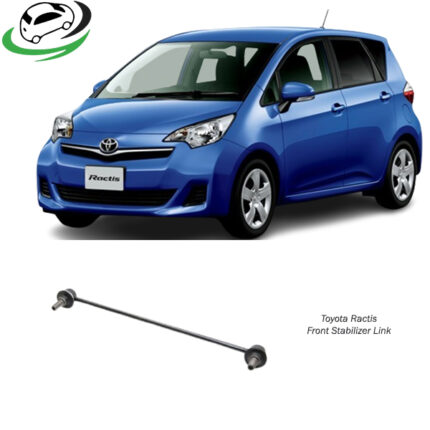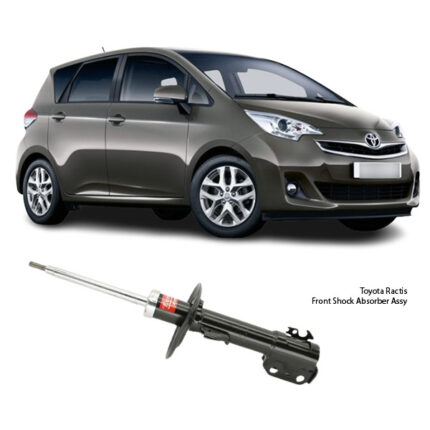Get Toyota Ractis Front Shock Absorber Assy 334472 in Kenya
The Front Shock Absorber Assembly is one of the most crucial components of a vehicle’s suspension system. It plays a vital role in maintaining ride comfort, stability, and handling performance. Without a properly functioning shock absorber, driving can become uncomfortable, unsafe, and even dangerous.
In this guide, we’ll take a deep dive into everything you need to know about Front Shock Absorber Assemblies – their function, types, components, signs of wear, replacement process, and more!
What is a Front Shock Absorber Assembly?
A Front Shock Absorber Assembly (also called a strut assembly in some vehicles) is a key part of the suspension system located at the front wheels. Its primary function is to absorb shocks and vibrations from the road, ensuring a smooth ride and stable handling.
Functions of a Front Shock Absorber Assembly:
Dampens Road Impacts – Absorbs shocks from potholes, bumps, and rough roads
Enhances Stability – Helps maintain tire contact with the road for better control
Improves Handling – Reduces excessive body roll and bounce
Minimizes Wear & Tear – Protects suspension components from excessive strain
Components of a Front Shock Absorber Assembly
A shock absorber assembly is more than just a simple damper. It consists of several interconnected parts working together to ensure a smooth ride.
Main Components:
Shock Absorber (Damper) – The core component that absorbs road shocks and vibrations.
Coil Spring – Helps support the vehicle’s weight and assists in shock absorption.
Strut Mount & Bearing – Connects the shock absorber to the vehicle’s body, allowing it to pivot during steering.
Bump Stop & Dust Boot – Protects the shock absorber from dust, dirt, and impact damage.
Spring Seat & Insulator – Reduces noise and vibration transmission to the chassis.
Note: In MacPherson strut suspensions, the shock absorber is integrated with the coil spring, forming a complete strut assembly.
Types of Front Shock Absorbers
There are various types of front shock absorbers, each designed for different driving conditions and vehicle types.
Hydraulic Shock Absorbers
Uses hydraulic fluid to dampen vibrations.
Smooth performance, widely used in standard vehicles.
Can overheat under extreme conditions.
Gas-Filled Shock Absorbers
Uses gas (usually nitrogen) to prevent oil foaming.
Offers better damping performance and stability.
Slightly stiffer ride compared to hydraulic shocks.
Twin-Tube Shock Absorbers
Features an inner and outer tube for better shock absorption.
Affordable, good for normal road conditions.
Less responsive than monotube shocks.
Monotube Shock Absorbers
Single-tube design for superior heat dissipation.
High-performance, used in sports and off-road vehicles.
More expensive than twin-tube shocks.
Adjustable Shock Absorbers
Allows customization of damping force (soft or stiff).
Ideal for performance cars and off-road applications.
Higher cost and requires manual adjustment.
Signs of a Failing Front Shock Absorber
Over time, shock absorbers wear out due to constant stress, exposure to harsh road conditions, and aging components. Here are some warning signs indicating that your front shock absorber assembly needs replacement:
Excessive Bouncing
If your car bounces excessively after hitting a bump, your shocks may be worn out.
Unstable Steering & Poor Handling
Difficulty in controlling the vehicle, especially around corners, suggests weak shocks.
Longer Braking Distance
Worn-out shocks reduce tire contact with the road, increasing stopping distances.
Uneven Tire Wear
If you notice irregular tire wear patterns, your shocks may not be keeping the tires firmly on the road.
Fluid Leaks Under the Vehicle
Visible oil leaks from the shock absorbers indicate a damaged or worn-out unit.
Noisy Suspension System
Clunking or knocking sounds while driving over bumps signal failing shock absorbers.
Vehicle Nose-Diving or Squatting
If your car dips forward when braking or squats when accelerating, the shocks are weak.
How to Replace a Front Shock Absorber Assembly
Replacing a front shock absorber is a moderate-to-advanced mechanical task. If you’re comfortable with DIY repairs, follow these steps carefully. Otherwise, visit a professional mechanic.
Tools & Equipment Needed
Jack & Jack Stands
Lug Wrench
Socket Set & Ratchet
Torque Wrench
Spring Compressor (if working with coil-over shocks)
Penetrating Oil (for rusted bolts)
Step-by-Step Replacement Process
Park the Vehicle on a Flat Surface & Secure It
- Engage the handbrake and use wheel chocks.
Lift the Front End & Remove the Wheel
- Use a jack to lift the vehicle and secure it with jack stands.
Disconnect the Brake Line & ABS Sensor (if applicable)
- Some shock absorbers are attached to brake lines or sensors.
Loosen the Lower Bolts & Upper Mounting Nuts
- Apply penetrating oil to rusted bolts for easier removal.
Remove the Old Shock Absorber Assembly
- Carefully take out the old unit and inspect for additional damage.
Install the New Shock Absorber Assembly
- Align it properly and secure it with bolts.
Torque the Bolts to Manufacturer Specifications
- Use a torque wrench to tighten bolts to the correct settings.
Reinstall the Wheel & Lower the Vehicle
- Ensure everything is tightened before taking the car off the jack stands.
Test Drive & Check for Issues
- Drive slowly to ensure smooth operation and no unusual noises.
Follow us on Facebook for more parts.




